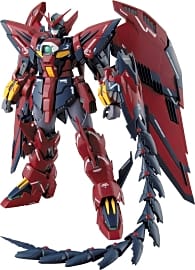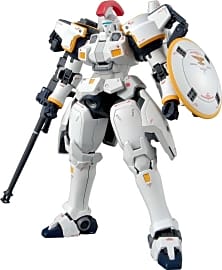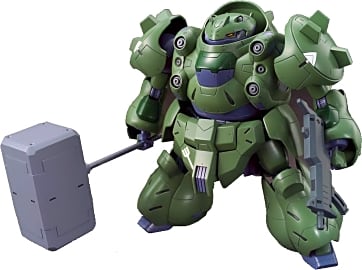The 10 Best Gundam Model Kits

This wiki has been updated 37 times since it was first published in February of 2017. Whether you have been a fan of the original Japanese science fiction franchise for more than thirty years or you're just now developing an interest in all things Gundam, these model kits are both enjoyable to assemble and a pleasure to behold. Most don't require glue or painting, yet still look striking on a shelf, and they make a great gift for any sci-fi or anime enthusiast. When users buy our independently chosen editorial recommendations, we may earn commissions to help fund the Wiki.
Editor's Notes
October 13, 2020:
Just as the various series have lasting popularity, so too do the model kits. Because of this, there weren't too many changes to the lineup from the last time we visited this list. That being said, not everything stayed exactly the same.
We decided to eliminate the Amatu Mina Gold Frame Astray because some of the components didn't fit tightly together, which meant pieces could potentially come apart when adjusting the pose. In its place came the MG 00 Qan[t] Full Saber. While more expensive than the removed model, it makes a more striking figure on a shelf thanks to its large, aggressive-looking shields. And, with the inclusion of the clear action base 5, you can set it into a range of dynamic poses without worry of instability. Plus, who wouldn't want to have a replica of one of the series most powerful mechas ever?
We also got rid of the HG Orphans Barbatos Iron-Blooded. Between its overly bulky joints, lackluster quality, and the arms being prone to popping off unexpectedly, there simply seemed to be better options out there. The MG Fazz Ver.Ka being one such model. Admittedly, it is a higher grade, and therefore more expensive and should be expected to be of better quality. That being said, there is no arguing its imposing size and weaponry make it an eye-catching addition to any display shelf, even in comparison to other master grades with oversized accessories, such as the Epyon Ver EW Master Grade.
If you don't mind a high price, a very complicated build, and have the patience to deal with tricky wires and aligning small pieces, the PG Exia is a top choice. Not only does the included base allow for a lot of poses, but it is equipped with color-changing LEDs throughout the body that ensure it looks just as cool in a dimly lit room as it does in a brightly-lit display cabinet.
If you have finally collected all the Gundam suits you want and are looking for other challenges to take on, you may want to consider branching out into other kinds of models.
May 27, 2019:
After one has determined which mecha they want and from which Gundam series, the next most important thing to take into account before making a purchase decision is the grade. Gundam model kits come in five grades, though only four will generally appeal to most fans: perfect, master, real, and high. Perfect grade are the largest and best quality. They also have the most amount of features, so it may be surprising that one didn't claim the top spot. Our reasoning behind this was that their cost and complicated build may put them out of reach for many except the most die-hard fans. Still, the impressive PG Seed Astray Red Frame did claim the number three spot. The PG GN-001 Exia is a good choice for somebody ready to give their first perfect grade a try, as its assembly is on the easier side for this level. Master grade is a step below perfect grade in both size and build complexity. They are also considerably less expensive. Despite this, they still feature an impressive level of detail and an inner frame skeleton, making them very sought after. Since they are more approachable the perfect grade units, but still very impressive, one claimed our number one spot, the Heavyarms Ver EW Master Grade. Moving further down the list in quality, cost, and amount of features, we have high grade. You can find the largest variety of mechas in the high-grade lineup, plus even beginners will usually find the assembly process relatively hassle-free, making them ideal entry-level choices. The extremely iconic HGUC RX-78-2 Revive claimed our number two spot and would be a perfect starter kit for anybody just getting into the hobby. Real grade is marketed as perfect grade in a smaller package and with a lower price tag, but we felt that for a roughly similar cost to master grade options, most users would be better off good master kit, so no real grade options currently made our list.
Special Honors
ArrowModelBuild If you like the look of Gundam models, but don't want to deal with the complicated and time-consuming assembly, you can buy a fully built mecha from Arrow Model Build. They offer a variety of master- and hobby-grade options, as well as some hi-resolution models, all of which are painted with meticulous detail. arrowmodelbuild.com
The History Of Mobile Suit Gundam
Before the release of Gundam in 1979, giant robots depicted in films or cartoons took the form of super robots.
It's been almost four decades since Mobile Suit Gundam changed the way the world viewed the mecha genre and established a totally new class of anime. Before the release of Gundam in 1979, giant robots depicted in films or cartoons took the form of super robots. These super robots generally appeared in kid's shows or comic books and would usually combat aliens and monsters. They were an evolution of the super hero rather than a science- and technology-based creation used in military settings.
In Mobile Suit Gundam, the large, pilotable robots known as mechs were usually owned and operated by governments. They were essentially tools used in combat between warring factions of spacefaring humans, much like how tanks or fighter jets are used today. Surprisingly, for a series that has persisted almost 40 years and is currently one of the most popular of all anime shows in Japan, it wasn't well-received during its initial run.
Lady luck smiled on the Gundam series when the Japanese toy manufacturer Bandai purchased the rights to produce toys based on the show. Much like how Gundam defined a new genre in anime, Bandai defined a new niche of toys: plastic models that required the owner to assemble and paint them. Up until this time, most models were made of die-cast metal and came fully assembled. Bandai plastic models were considerably cheaper. As they took off in popularity, they sparked an interest in Mobile Suit Gundam. Soon, reruns of the series were performing well on TV, as did theatrical compilations in 1981 and 1982.
The 1980s saw the release of additional Gundam TV shows and movies, but it wasn't until the mid 1990s, with the release of Mobile Suit Gundam Wing, that the series exploded in popularity worldwide. Interestingly enough, the Mobile Suit Gundam Wing wasn't very well-received in Japan. It was, however, the first full Gundam series to air on TV in America and broke new ground as one of the first Japanese animation shows released in America without heavy editing of the source material.
Since that time, Gundam has continued its worldwide popularity and has influenced a number of mainstream movies and television shows. For example, fans of the series can easily spot commonalities between Gundam mechs and those appearing in the Hollywood blockbuster Pacific Rim. The real robot genre even inspired the Japanese government to allocate money into research and development of robotic mobile suit technology and exoskeletons for military use.
Making Sense Of The Large And Confusing Gundam Mulitverse
There are very few shows out there that have such an overarching multiverse as Gundam. In fact, even diehard fans of the show sometimes have trouble navigating the different timelines. To help simplify things, we have put together a brief overview of three of the most well-known universes.
The Cosmic Era is another we much-loved universe well worth delving into.
Universal Century is the original Gundam Universe and where all subsequent series have their roots. It kicked off the entire franchise, beginning with Mobile Suit Gundam in 1979. While some of the series set in Universal Century haven't held up well over time, the majority of them are worth a watch just to get you firmly grounded in the Gundam multiverse. Universal Century has the most diehard fanbase of any Gundam universe and new content is still being added nearly 40 years after its inception. It mostly centers on the events that took place during, or the fallout from, the One Year War. It features clear cut sides of good and bad, the Earth Federation and the Republic of Zion, respectively.
The Cosmic Era is another we much-loved universe well worth delving into. It launched in 2002 and depicts characters with a more modern anime look that includes oversized eyes, somewhat waifish figures, and highly detailed mechs. It begins with Gundam SEED, which many fans believes takes the very best aspects of Universal Century and updates them to meet the demands of a contemporary audience. If you want to get your feet wet in the Gundam multiverse without having to watch the somewhat dated initial Universal Century series, the Comic Era is a good choice. It tells the story of a war between regular Earthlings, called Naturals, and the spacefaring, genetically-engineered humans known as the Coordinators.
After Colony is the Universe that helped to popularize mecha anime with Millennials. It launched in the United States in 2000 and in Japan in 1995. Most of the Gundam series that aired on the US Cartoon Network Toonami block in the early 2000s take place in After Colony. While older fans of the franchise may not appreciate most of the story lines, it is undeniable that the younger generation loved it, so it may be worth giving it a chance. As with the Cosmic Era and Universal Century, in After Colony Earth is at war with the space colonies. The main difference is that this time, viewers are led to sympathize with the spacefaring colonies rather than Earth inhabitants.
Does Building Models Make You Smarter?
Sure, it may look like child's play to the untrained eye, but many researchers believe that putting together models is extremely healthy for the human brain. Considering how many building toys, such as Legos, Lincoln Logs, and K'Nex, are labeled as educational toys, this doesn't seem very farfetched. In fact, Kikunori Shinohara, a professor and researcher in Neuroscience Department at Suwa Tokyo Science University, has stated that assembling Gundam models specifically increases blood circulation in the brain. Increased blood circulation to the brain improves a person's ability to remember, concentrate, and react to external stimuli.
Not only does building models improve brain function, it also helps to improve fine motor skills. The more advanced a model kit is, the greater dexterity it will require to assemble correctly. According to the National Toy Council, the act of assembling models fosters spatial understanding, which is an important life skill. And, as anybody who has ever tried assembling something with tiny, intricate parts can tell you, it requires a high degree of patience, as well.
All of this means that assembling models is good for both the young and old alike.


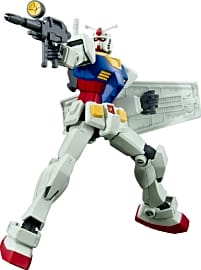
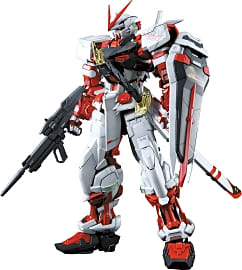

![MG 00 Qan[t] Full Saber](https://d7y9tqwfp7l4x.cloudfront.net/item_images/wxrmujh5pdn3cibfgj85.webp)
